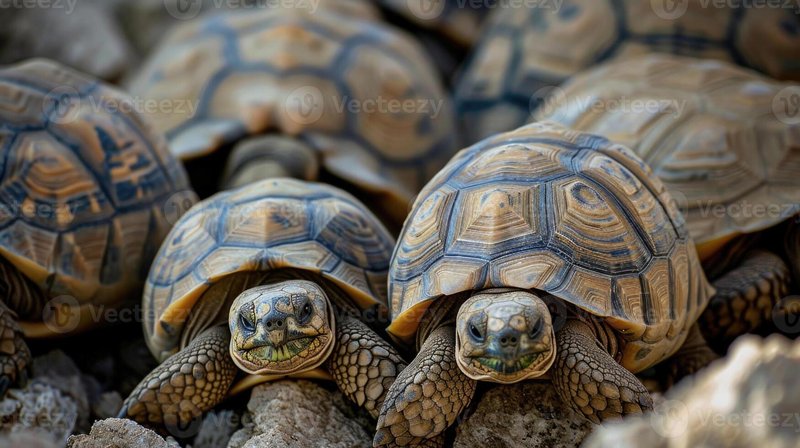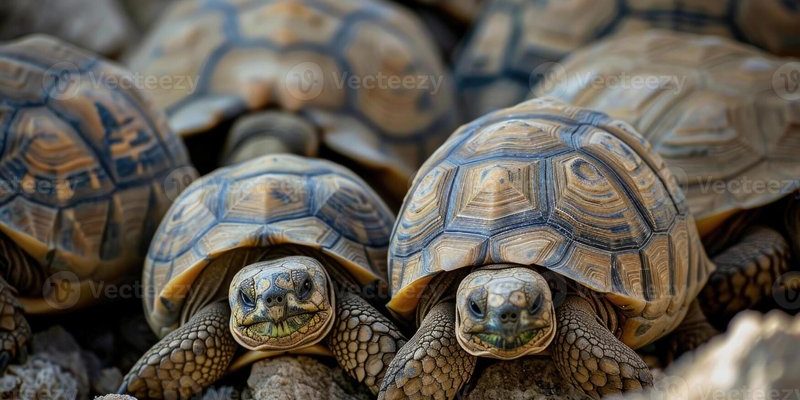
These living dinosaurs have developed fascinating survival strategies that allow them to handle the extremes. Much like a skilled sailor navigating stormy seas, tortoises have their own tricks to weather harsh conditions. With their sturdy shells, unique diets, and incredible water conservation methods, they’re nature’s little survivors. So, how exactly do tortoises tackle these challenges? Let’s dive in!
Adaptations to Extreme Temperatures
One of the biggest challenges tortoises face is extreme temperatures. Whether they’re basking in the sun or hiding from heat, tortoises have some clever adaptations. Their hard, protective shells not only defend them against predators but also help regulate their body temperature. Think of their shell as a tiny climate control system.
When it’s hot outside, tortoises can burrow into the sand or mud to escape the heat. This underground retreat can keep them both cool and safe. Some species, like the desert tortoise, go a step further by using their powerful front limbs to dig deep into the ground where it’s cooler.
When the weather cools down at night, tortoises often come out to soak up the last rays of warmth. They have a unique ability to absorb heat during the day, which keeps their bodies warm even after the sun goes down. It’s like they carry a little bit of sunshine with them!
Water Conservation Techniques
Water is essential for all life, but it’s especially critical in harsh environments. Tortoises have developed amazing methods to conserve water, making them true champions of survival. One ingenious way they do this is by having a specially adapted kidney.
Tortoises can filter out waste while retaining as much water as possible. This means they can go for long periods without drinking anything—sometimes weeks or even months! They also have a unique ability to absorb moisture from the foods they eat. For instance, when they munch on juicy cactus pads or leafy greens, they’re not just getting nourishment; they’re hydrating themselves, too.
In a pinch, tortoises can even utilize their own bodies’ fat stores for energy, which reduces the need for water. It’s like having a personal water bottle that never runs dry!
Diverse Diet for Survival
What a tortoise munches on plays a huge role in its ability to withstand tough conditions. Most tortoises are herbivores, feeding on an array of plants, grasses, and fruits. This varied diet not only provides them with essential nutrients but also helps them adapt to their environments.
For example, in arid regions, tortoises seek out plants that store water, like succulents. This means they’re not just eating but choosing foods that help them thrive. Some tortoises even take advantage of seasonal blooms, switching their diet based on what’s available.
Interestingly, tortoises are picky eaters. They often know exactly which plants are safe or beneficial for them. This instinctual knowledge acts like a built-in survival guide, helping them avoid potentially harmful vegetation.
Behavioral Adaptations
Tortoises have some pretty quirky behaviors that help them cope with their surroundings. One of their most interesting traits is their ability to slow down their metabolic rate. When conditions get tough—like during a dry spell or extreme temperature—they can go into a sort of hibernation.
This state, known as estivation, allows them to conserve energy and wait it out until conditions improve. It’s like hitting a pause button on life! During this time, tortoises can stay burrowed in the ground, safe from the harshest elements until it’s safe to come out.
Additionally, tortoises are social creatures, often found huddling together for warmth or safety. This behavior not only provides them with comfort but helps protect against predators. It’s like having a built-in community to lean on during tough times.
Shell Structure and Function
The tortoise shell isn’t just for show; it’s a vital part of their survival. This hard, protective covering is made up of two main parts: the carapace on top and the plastron on the bottom. Together, they form a fortress against predators and environmental extremes.
The shell is also incredibly lightweight, allowing tortoises to move without much effort while still offering solid protection. You might think of it like a superhero’s armor—strong yet not too bulky to hinder movement.
Moreover, the shell helps with temperature regulation. The darker colors of some species can absorb more heat, while lighter colors reflect sunlight, helping them stay cool. It’s all about smart design, allowing tortoises to adapt effortlessly to their surroundings.
Habitat Selection and Migration
Tortoises are masters of habitat selection. They gravitate toward environments that suit their needs while offering the lowest threats. Many species are found in dry, arid areas like deserts or scrublands, where few other animals can survive. This choice is strategic; by living in less competitive habitats, tortoises minimize their chances of encountering predators or competition for food.
Some tortoise species migrate seasonally to find better food sources or optimal temperatures. For instance, the Aldabra giant tortoise moves between different islands in search of lush vegetation during the rainy season. It’s a bit like moving to a new neighborhood when the old one becomes too crowded or inhospitable.
In these migrations, tortoises rely on their impressive navigational skills, often using the sun and landmarks to find their way. It’s a testament to their resilience, showcasing their ability to adapt to a changing environment in pursuit of survival.
Tortoises are incredible survivors, equipped with a suite of adaptations that allow them to thrive in harsh environments. From their unique shells that protect them from predators and help regulate temperature to their impressive water conservation techniques, they demonstrate the amazing resilience of nature.
By understanding how tortoises overcome challenges, we can appreciate them even more. They’re not just slow-moving reptiles; they’re adaptable creatures with fascinating strategies for survival. Whether it’s their diverse diet or behavioral quirks, tortoises remind us of the power of adaptation in an ever-changing world. Next time you see one, you might just look at them with a little more awe!

